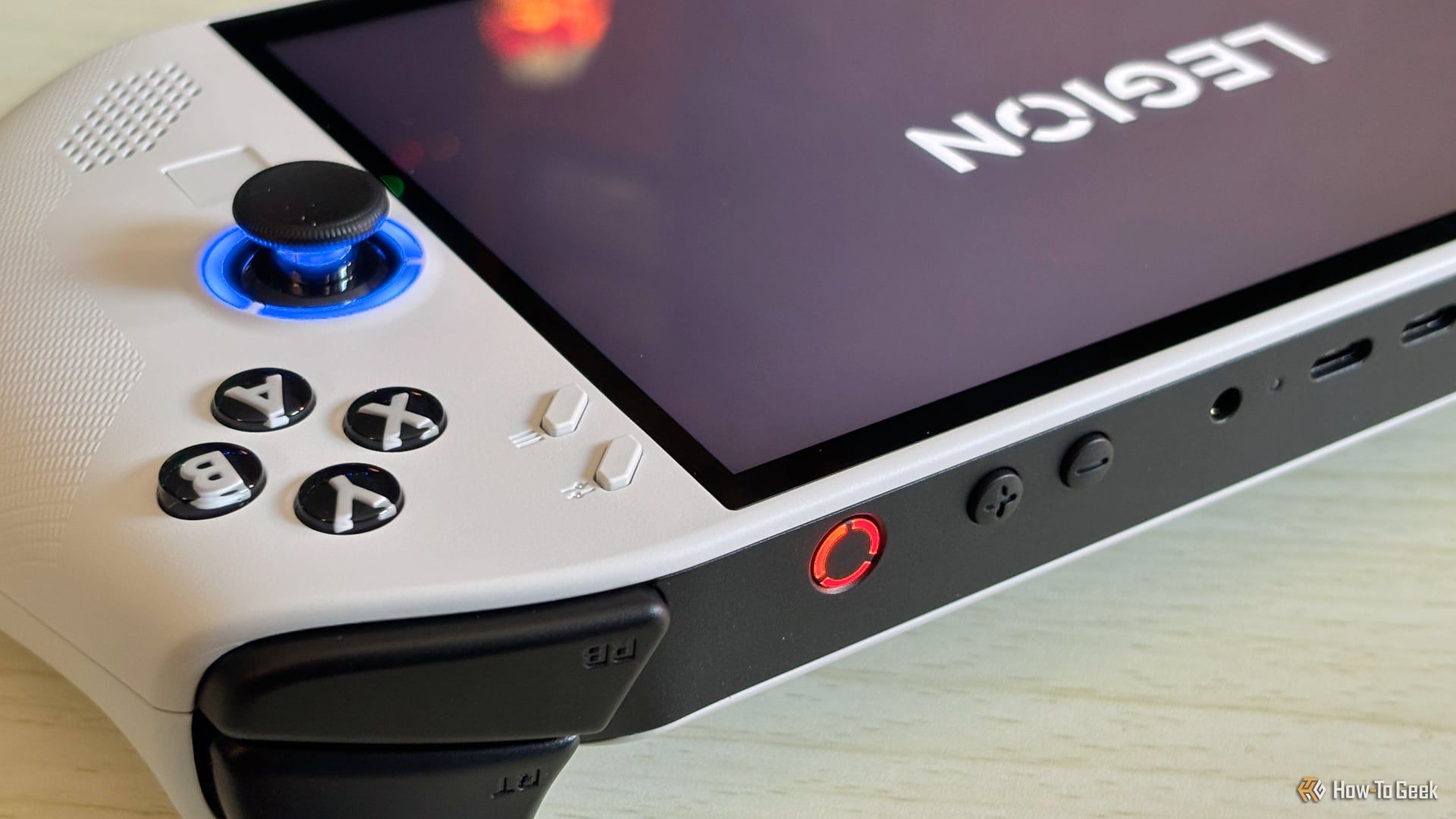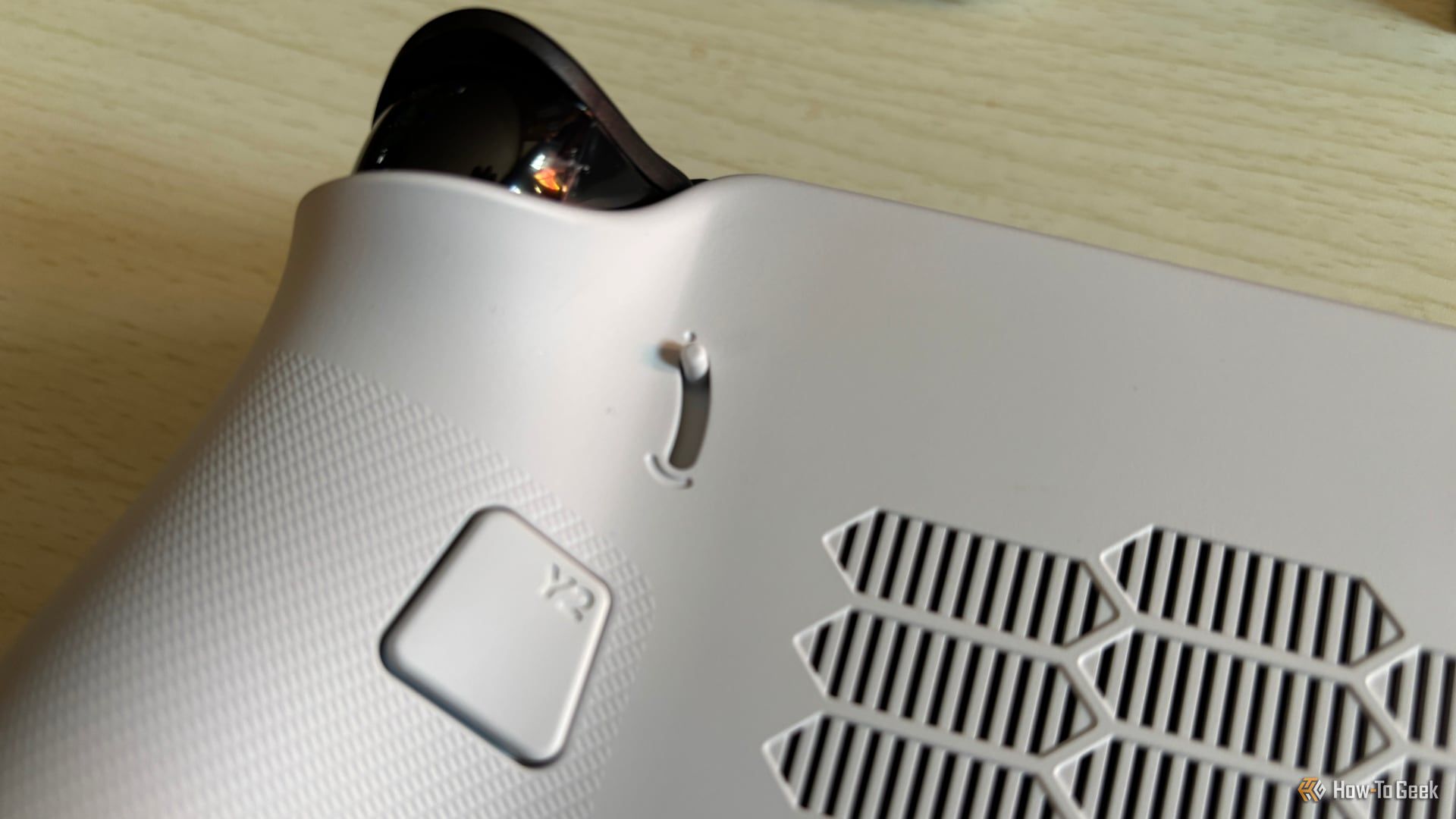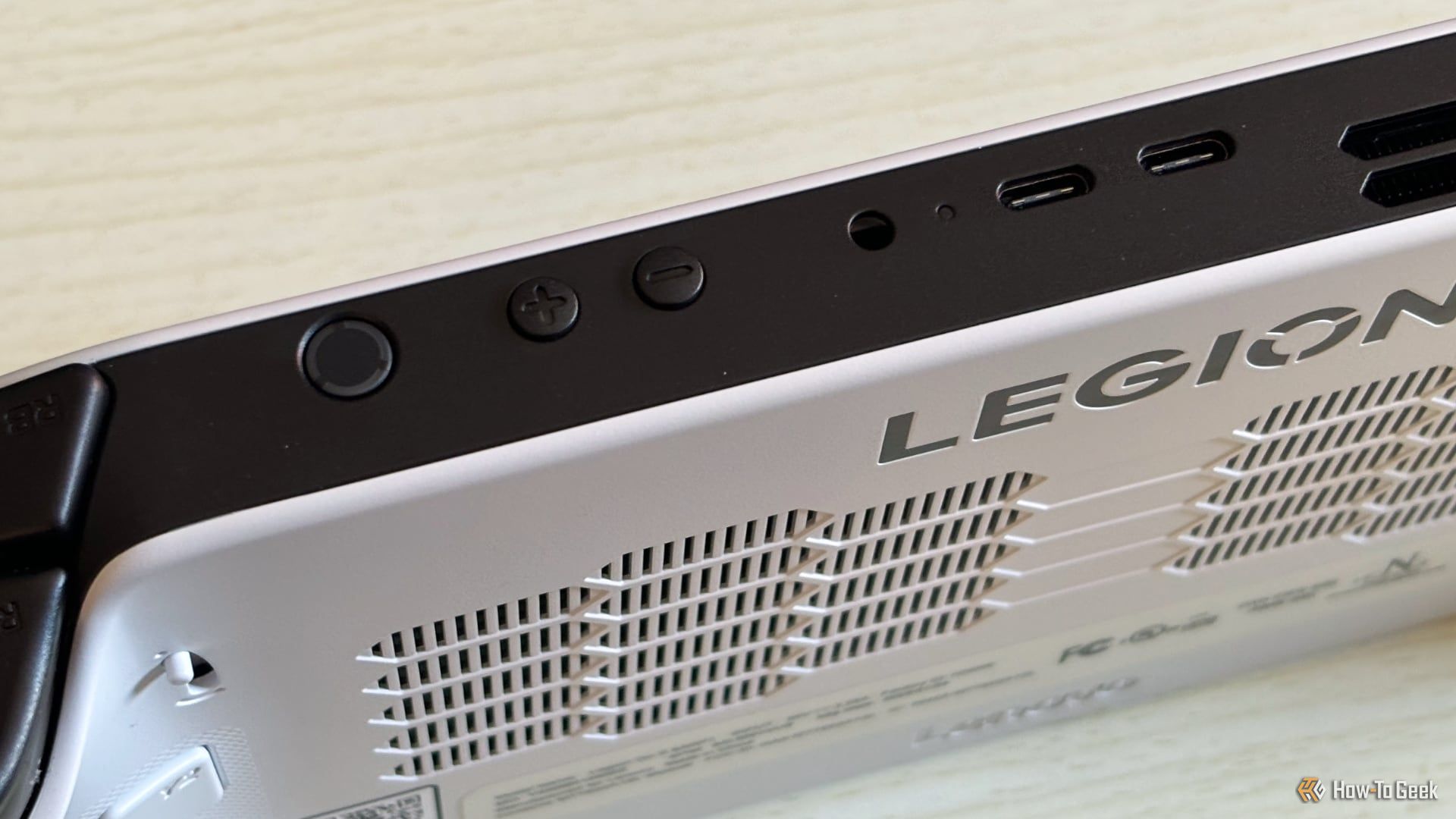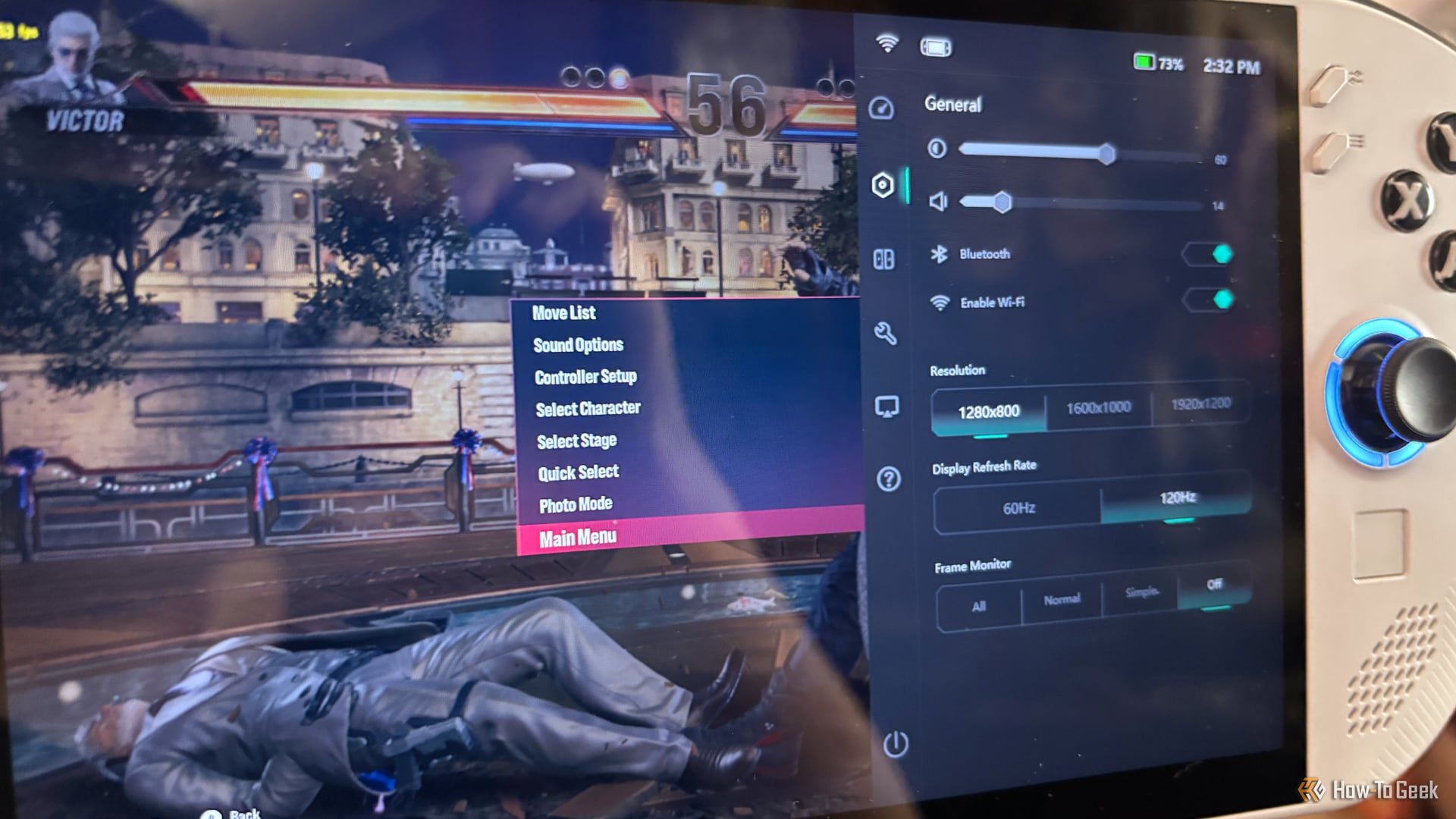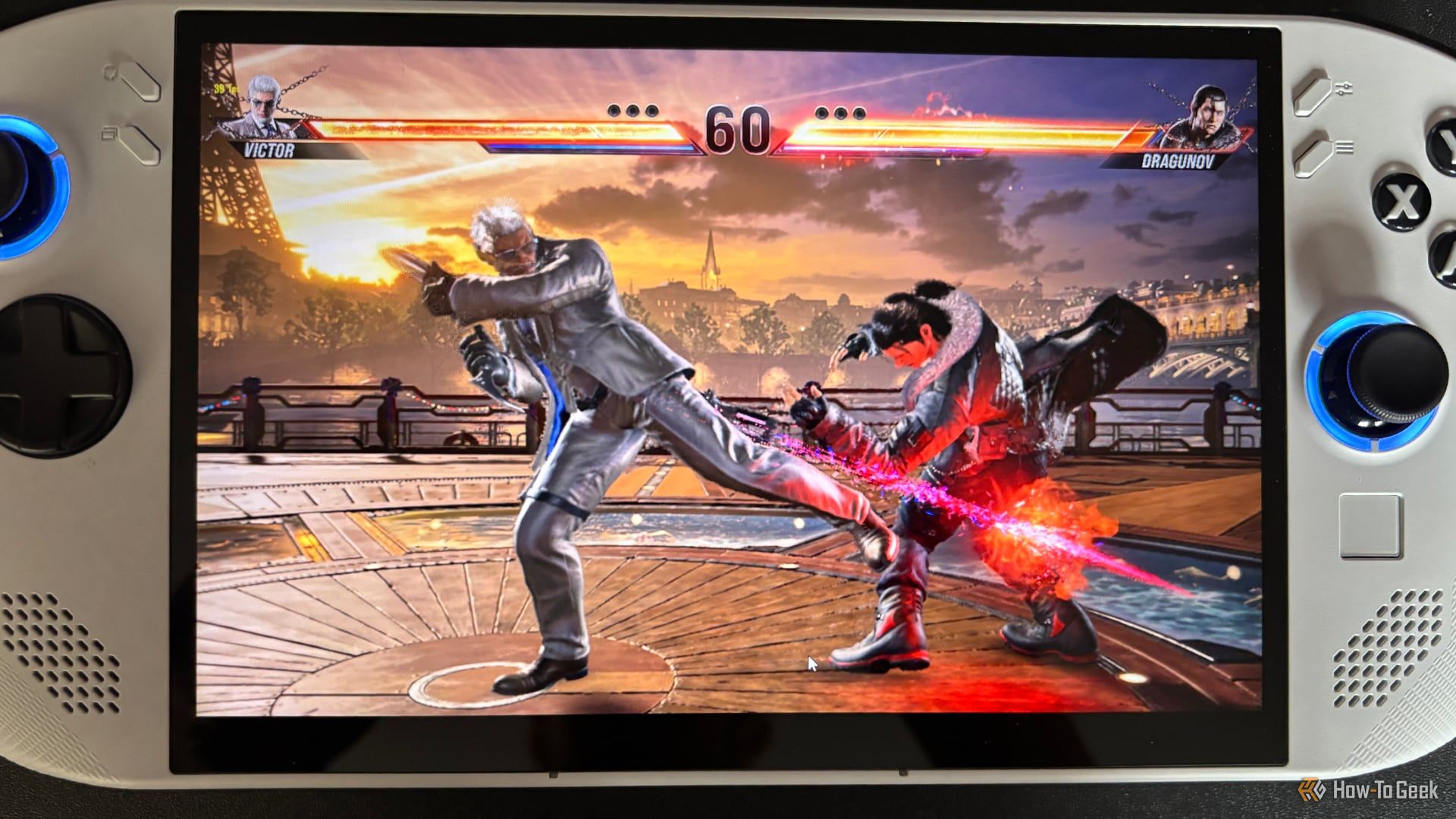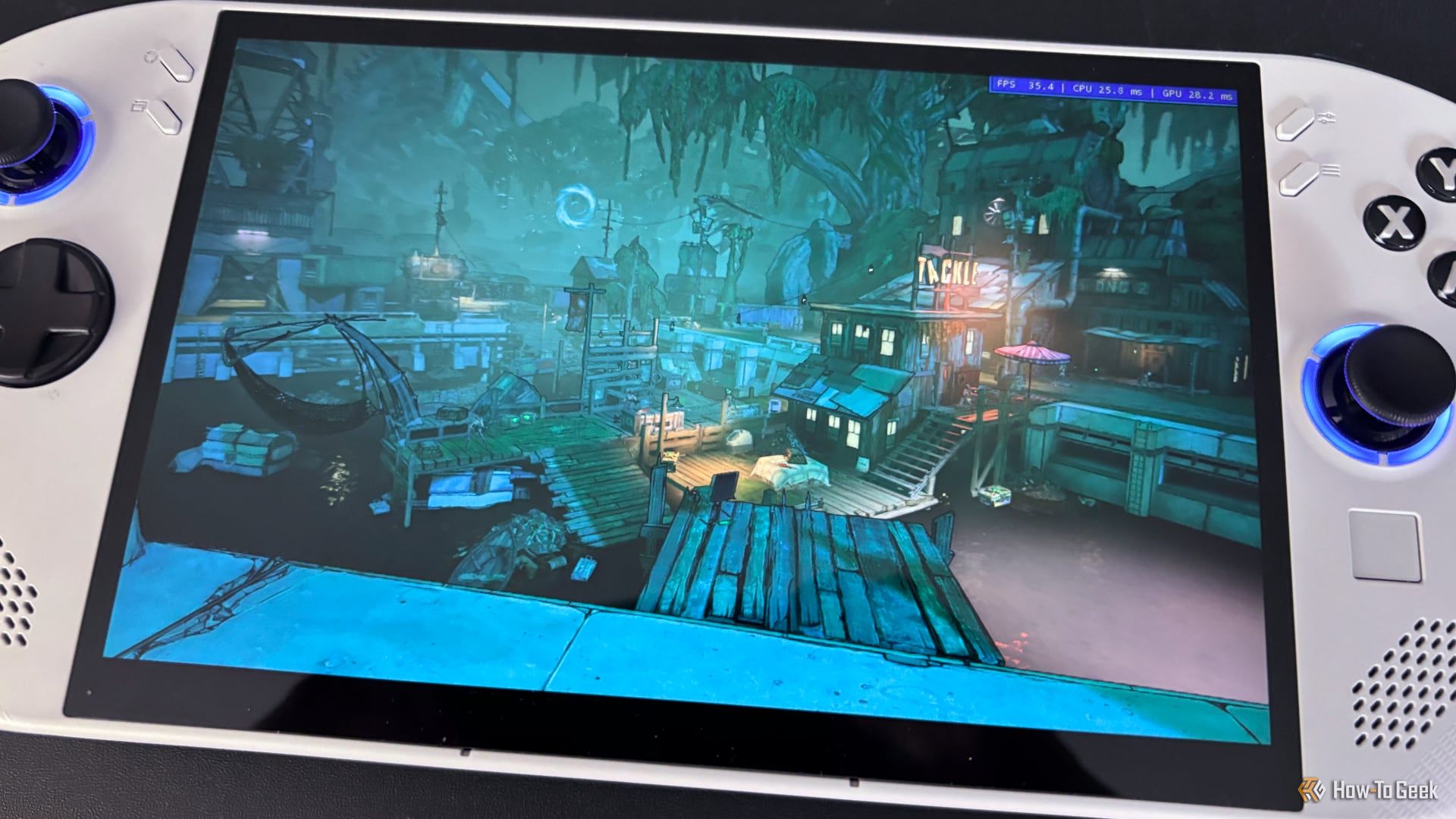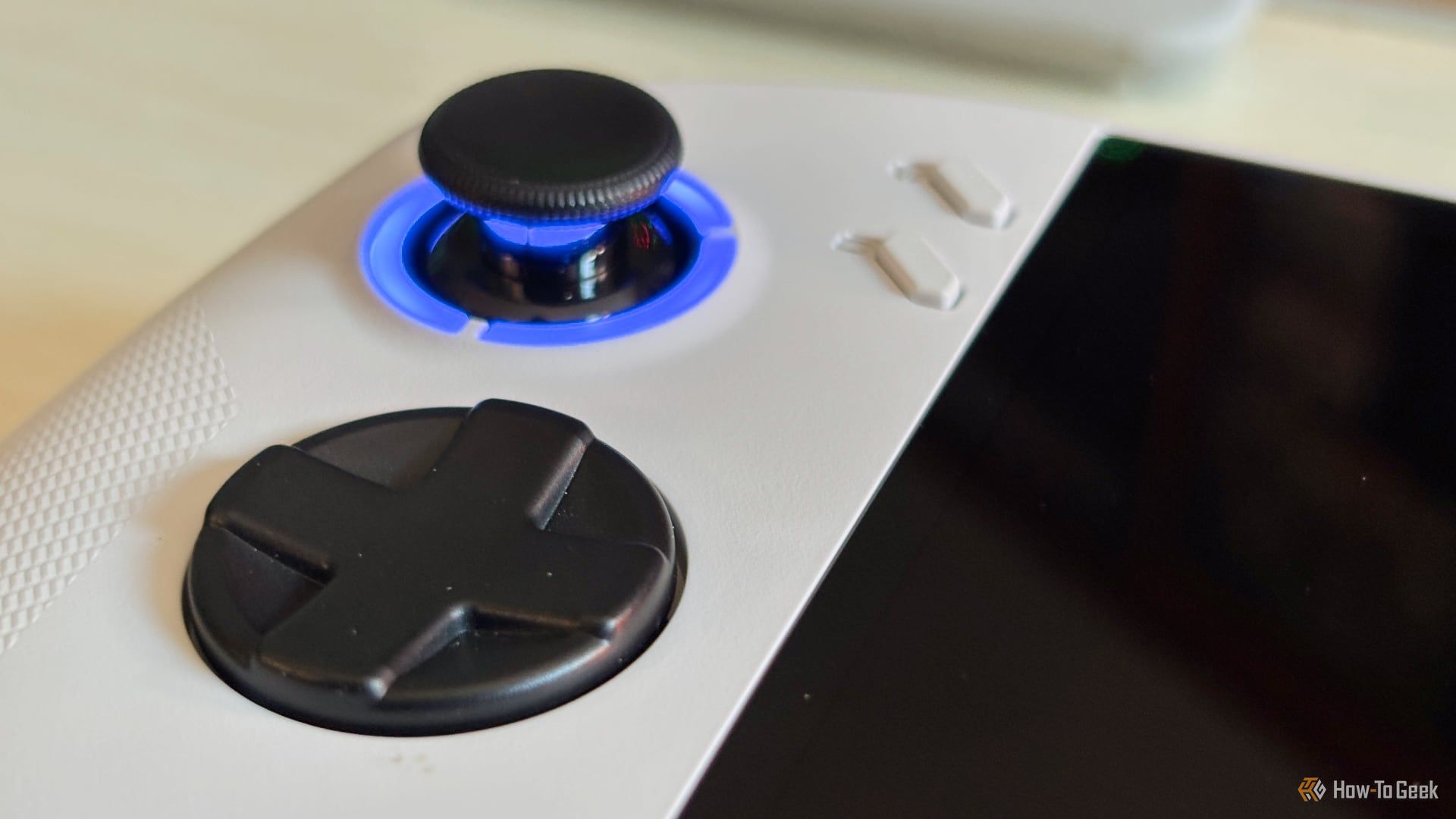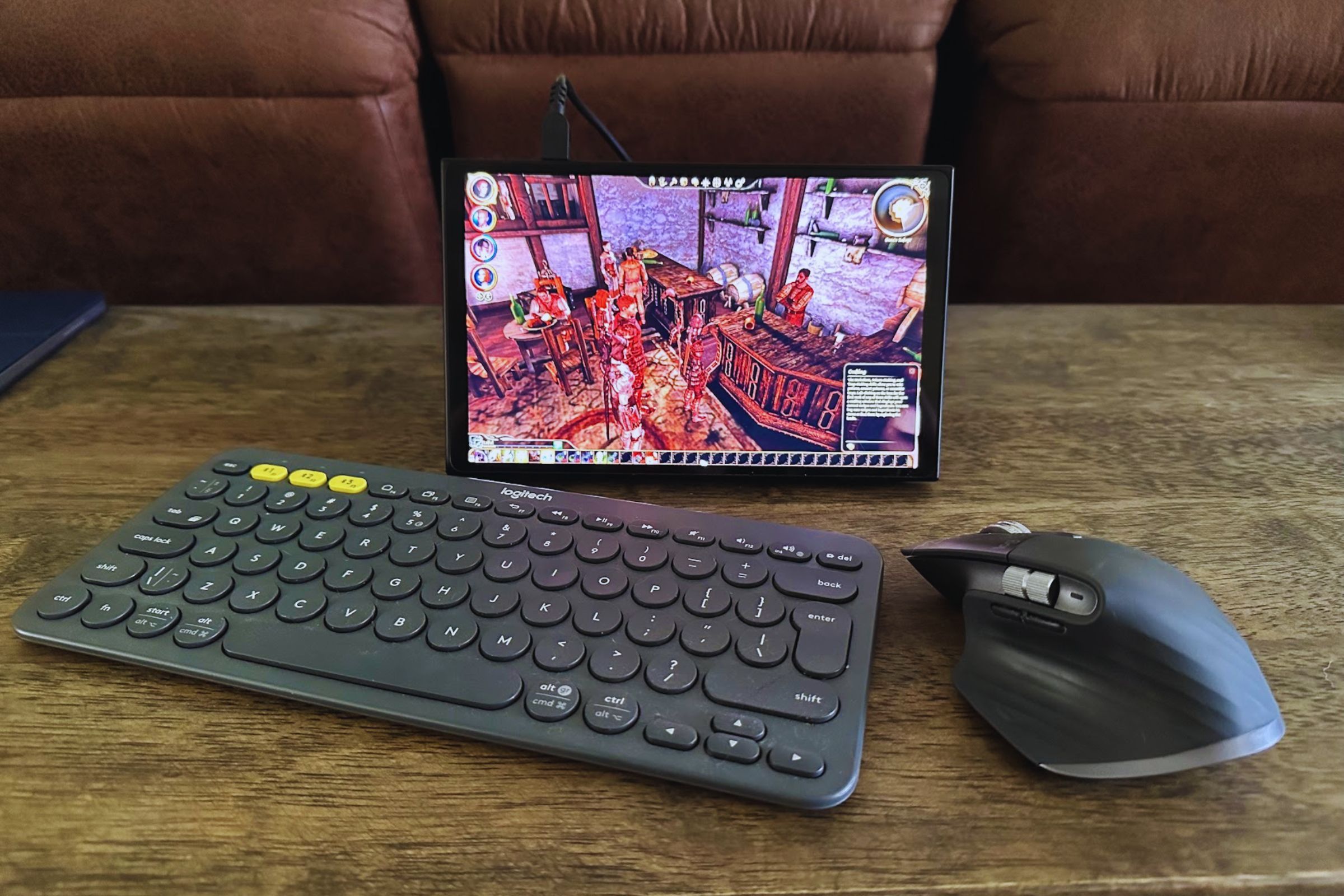Summary
- The Lenovo Legion Go S retails for $729 and is currently only available with Windows 11 Home, though a cheaper SteamOS version is coming.
- The device has a comfortable design, 120Hz IPS display, 32GB RAM and 1TB storage, which is upgradable.
- Performance is underwhelming due to the AMD Z2 Go chip. Battery life is average.
Since the launch of the Steam Deck, there has been clear room for a competitor to stand up to Valve’s mighty handheld. While a coming SteamOS-powered update may change things, the Lenovo Legion Go S isn’t even much competition to its predecessor.
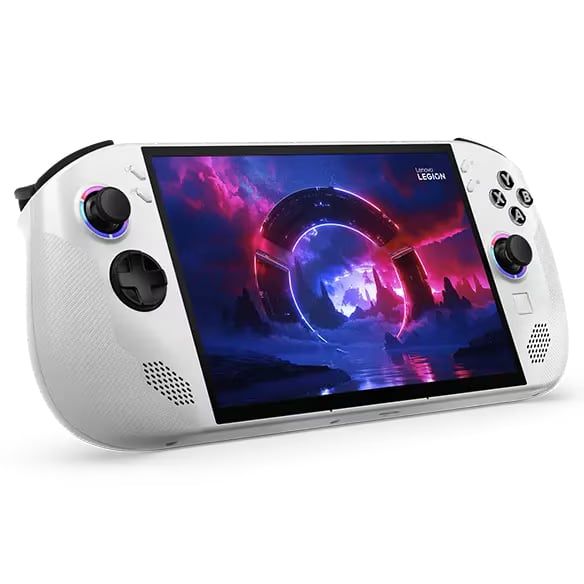
Lenovo Legion Go S
If you’re looking for a Windows-powered gaming handheld with great ergonomics, the Lenovo Legion Go S is an ultra-comfortable model with an entry-level chipset.
- Comfortable to use for hours
- Sharp, colorful IPS display
- Windows is handy for some games
- Windows feels awkward on handhelds
- In-game performance is underwhelming
- Unimpressive battery life
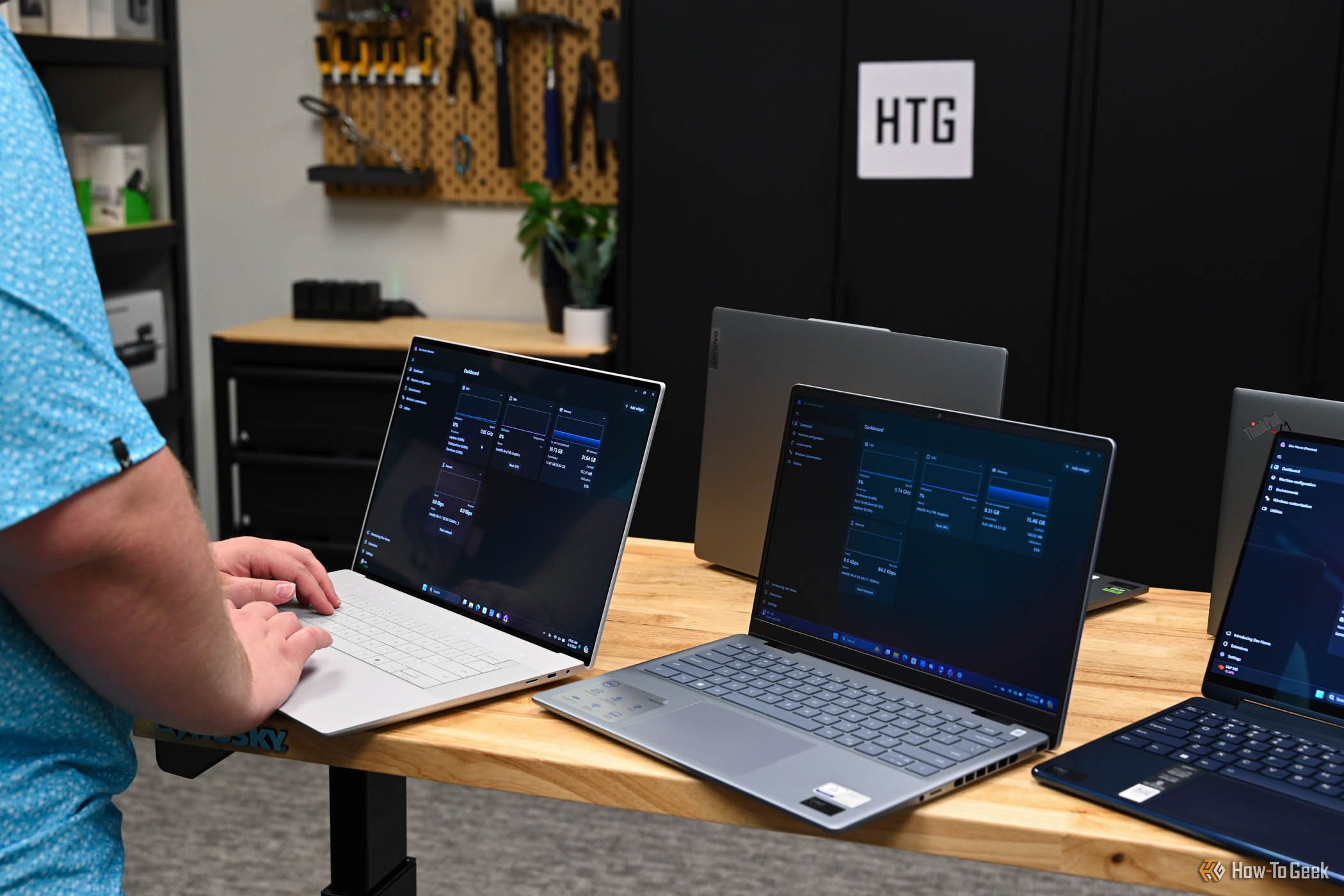
See Our Process
How We Test and Review Products at How-To Geek
We go hands-on with every product to ensure it’s worth your time and money.
Price and Availability
The Lenovo Legion Go S retails for $729 and currently comes in one configuration. It features a 120Hz, 8-inch 1920×1200 IPS display, 32GB RAM, and 1 TB of built-in storage. This model runs Windows 11 Home as the operating system.
Lenovo plans to release another version later this year, with different specs. That model is planned to have just 16GB RAM and 512GB storage but will run SteamOS instead of Windows. It will also sell for a more affordable $499.
Great Feel and a Well-Balanced Design
The Legion Go S is Lenovo’s follow-up to the Legion Go, which was a slightly more Nintendo Switch-inspired design made of plastic and aluminum. The Legion Go S leaves the metallic touches behind entirely, opting for an all-plastic build.
This does mean that the Legion Go S is slightly lighter, weighing in at 1.61lb, While I haven’t spent time with its predecessor, I can say that the newer model is comfortable to use for hours. Despite (or maybe thanks in part to) its larger size, I found the Legion Go S less fatiguing to hold than my Switch.
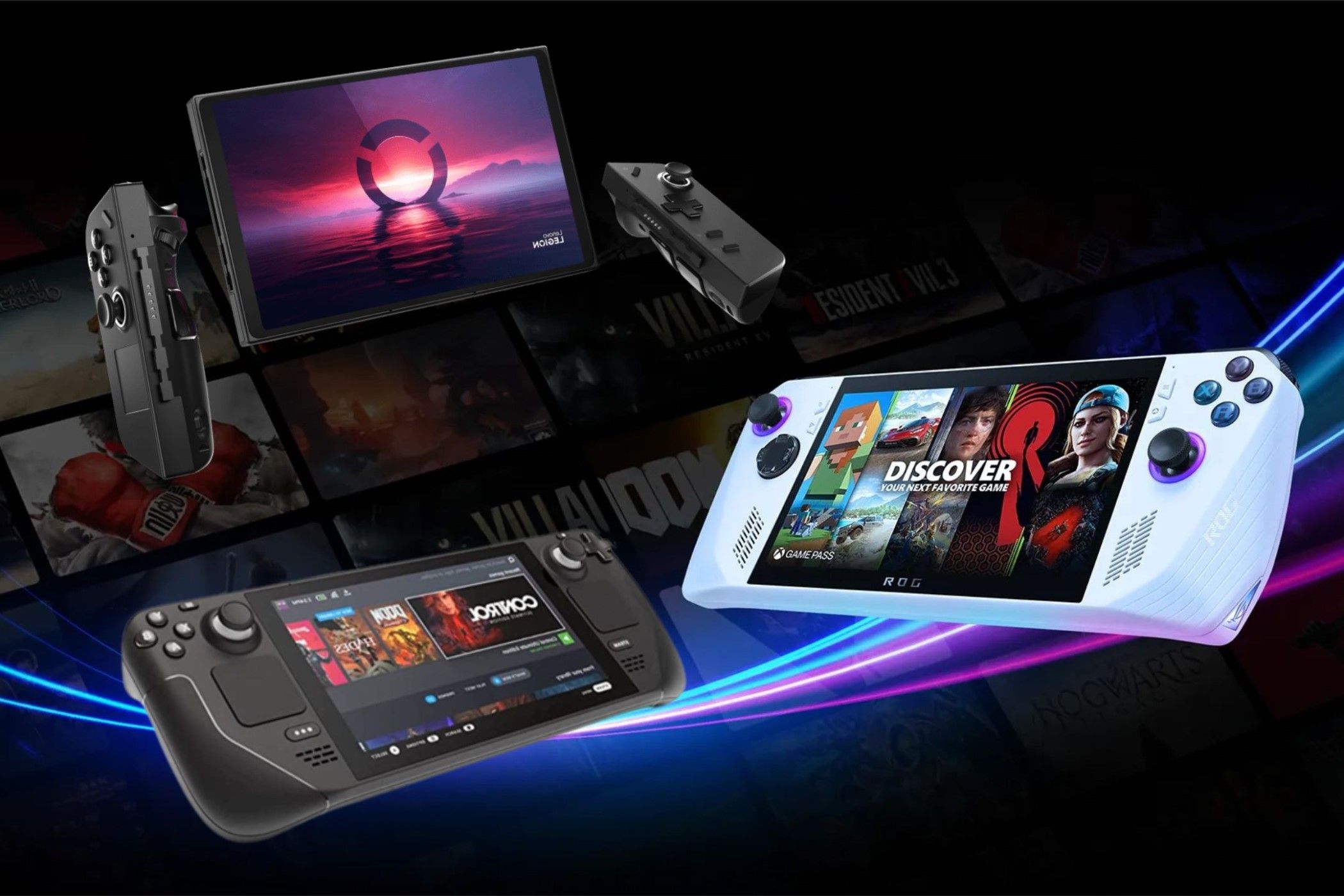
Related
Steam Deck vs. Asus ROG Ally vs. Lenovo Legion Go: Which Handheld Is the Best?
Find the best handheld console for your needs based on your budget, desired specs, and performance.
Looking at the controls, the Legion Go S is laid out like an Xbox controller, which makes sense as this layout has become the de facto standard in PC gaming. Instead of the colorful Xbox-style buttons, however, these are white on black, keeping with the minimalist aesthetic of the rest of the device.
The analog sticks are offset, again in the traditional Xbox style, with a D-pad below the left stick. A bizarre little square of a touchpad sits below the right stick, too small to be of any real use, but interesting as a novelty if nothing else. You’ll still be glad the Legion Go S has a touchscreen.
The R1 and L1 buttons are standard bumpers, but the R2 and L2 buttons feature switches on the back to switch them between trigger-style and bumper-style buttons. There are also two programmable Y1 and Y2 buttons on the back of the handheld.
The understated monochrome look of the Legion Go S flies out the window the second you turn the machine on, as the analog sticks feature RGB lighting. It’s a nice effect, but less than subtle.
The Right Number of Ports
A handheld with just one USB port will always feel limited, since you’re probably using that same port to charge it. Fortunately, the Legion Go S features a pair of USB-4 ports, located directly next to one another between the shoulder buttons. Here you’ll also find the 3.5mm audio jack, volume, and power buttons.
On the button, there’s a microSD slot, giving you expandable storage of sorts. You can actually upgrade the M.2 2280 SSD in the Legion Go S, assuming the included 1TB isn’t enough, but the expandable storage is still handy.
A Sharp, Colorful Display
The Legion Go S features a slightly smaller 8-inch display than the 8.8-inch model featured on its predecessor. The maximum resolution has dropped to 1920×1200 as well, but this would be pushing it for plenty of games on this sort of hardware anyway.
Unlike the Steam Deck, the Legion Go S is only available with an IPS display, but the good news is that this is still a sharp, crisp-looking display. It’s fairly bright, measuring around 450 nits, and easily visible in daylight. Colors aren’t photo-editing accurate, but they don’t need to be.
Like the original Legion Go, the Legion Go S features a variable refresh rate screen, which goes a long way toward making games feel extra smooth. In the case of the Legion Go S, the maximum refresh rate is 120Hz, down from 144Hz on the original Legion Go.
While the screen is still great, the speakers are just serviceable. If you’re serious about in-game audio, you’ll want headphones.
Software: Addressing Windows’ Woes
The Legion Go S runs Windows 11 Home, and I was instantly aware of this, thanks to the setup process that feel exactly like running a laptop for the first time. When the setup process had completed, and I was finally able to log in, I thought I must have done something wrong.
By default, the screen scales to 200%, which does make icons easier to hit, but also makes everything incredibly cramped. Lenovo’s own software actually recommends setting the scaling to 150%, which I did. After this, this interface felt much more usable in general.
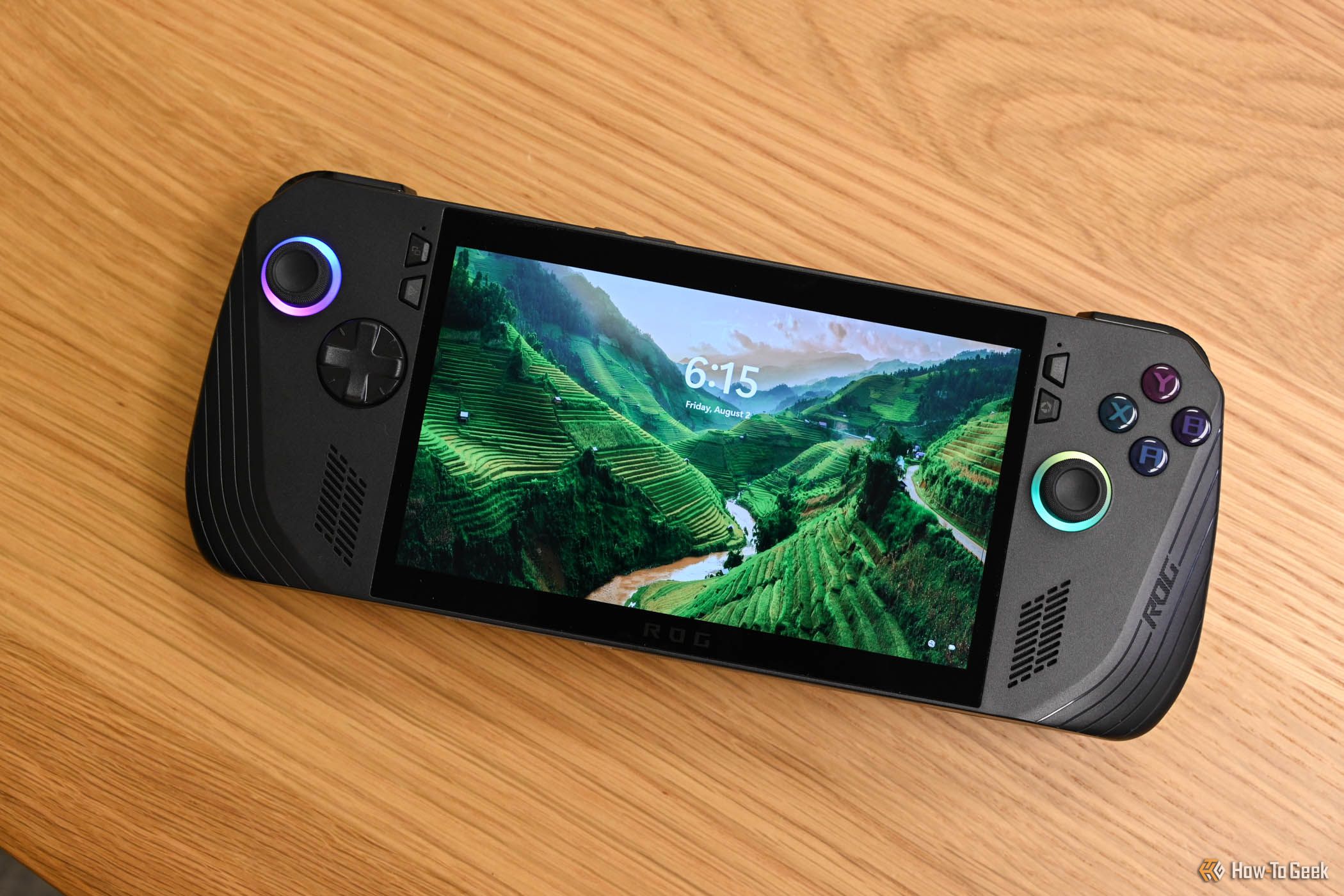
Related
Windows 11 Is Changing the Way You Type on Handheld Gaming PCs
A new Gamepad on-screen keyboard layout lets you type with your handheld PC’s analog controls, rather than its touchscreen.
Still, Windows doesn’t feel at home on a handheld, and Lenovo knows this. This is why one of the buttons on the controller maps to the company’s Legion Space software, which ties your settings, game libraries, and customizations in one place.
Typically, these apps are a mess, but Legion Space is laid out logically, and you don’t need to use the game library, for example, if you only care about the settings section. In fact, this is the section people will likely spend the most time in.
In this section, you can adjust power and fan profiles, balancing performance and battery life. There’s also a quick settings panel you can access quickly in-game to adjust settings like resolution.
Things are far from perfect on the software front, however. I encountered my share of issues with the Legion Go S, like the on-screen keyboard failing to display, usually in-game. I also noticed occasional Wi-Fi issues where downloads would slow to a crawl, stop, and then resume, but this was sporadic.
Finally, there are the strange touchpad settings, which cause it to vibrate like an early 2000s cell phone whenever you attempt to use it. You can turn this off, but it’s odd that it’s the default.
Performance: Here’s the Catch
The Legion Go S is powered by the AMD Z2 Go, which is the base-model chip in its line, and a step down in power from the Z1 Extreme that powered the original Legion Go. While that chip is an eight-core, 16-thread model, the Z2 Go powering the Legion Go S is a four-core, eight-thread model.
This step down in sheer power means that if you’re running a game at the native resolution of 1920×1200, it’s either an older game, or you’ve got the settings turned way down. That said, if you intend to run games at 1280×800—perfectly usable for handheld gaming—well, you still may have issues.
Plugged in, the Legion Go S has a decent amount of power. It struggled with Cyberpunk 2077’s benchmark on the Steam Deck preset, with an average frame rate of 26.19FPS, but handled itself surprisingly well when I jumped in and started playing. It was certainly in need of a few tweaks, but it felt playable.
Borderlands 3 was slightly more confusing. I tried the game’s benchmark in multiple configurations, including native resolution and low settings, or 1280×800 and medium settings. Benchmark scores always hovered in the mid-30s. In terms of gameplay, I had the best luck running at native resolution but with internal rendering set to 1280×800.
As long as you’re willing to take your time with settings, you can get a surprising number of games to perform well. I’ve seen Avowed look better, but had it running on the Legion Go S smoothly enough. The fight intros in
Tekken 8 slowed down a bit, but the fights themselves were impressively smooth.
None of this is bad, but on the other hand, it certainly isn’t impressive, and compared to what the Steam Deck can already do, it leaves the Legion Go S feeling overpriced for the performance you get.
Battery Life or Performance: Choose One
Battery life is tricky to measure when it comes to any computer, but handhelds are especially tough. To start with the concrete facts, the Legion Go S uses a 55.5Wh battery, which is ever-so-slightly larger than the 50Wh model found in the Steam Deck.
That said, the differences between the two devices, both when it comes to hardware changes like the display resolution or software like the OS they run, make it tough to really compare the two.
For any game you tend to play a lot of on the Legion Go S, you’ll probably have an initial period where you dial in settings, finding the right balance between battery life and decent performance. There will be plenty of cases where you’ll need to be comfortable ignoring a game’s minimum system requirements.
In my experience, I tended to need to lean further toward performance and away from battery life for newer games, but this will vary greatly depending on what you play.
Using the Legion Go S to play a few hours of Vampire Survivors barely touched the battery. Playing that game or something similar, I’d expect to get five hours easily. Playing Borderlands 3 or Tekken 8 drained the battery quickly, regardless of how I managed settings.
The good news is that the Legion Go S supports 100W fast charging, though the charger included in the box is just a 65W model. Still, it’s nice to see supported.
Should You Buy the Lenovo Legion Go S?
With as many complaints as I have regarding my time with this handheld, it certainly has its upsides as well. The Lenovo Legion Go S is comfortable to hold for extended periods of time, and the aesthetics are certainly nice, assuming you’re a fan of RGB lighting. It’s got a great IPS screen, and while it’s not an OLED, it’s still plenty sharp and colorful.
The main problem is the pricing. Every single aspect of this device would feel better, and every minor bug would be easier to look past, if it didn’t cost more than a fully kitted-out Steam Deck. If it performed circles around the Deck or other similarly priced handhelds, it might pull off the price jump, but as it is, it just feels out of touch.
While I didn’t test this personally, there are reports across the internet of Legion Go S owners having a great time running Linux distributions on their handhelds, which gives me hope for the eventual SteamOS-powered version. When that version arrives, lower spec’d and more affordable as it is planned to be, that will be the more interesting version for most potential buyers.

Lenovo Legion Go S
If you’re looking for a Windows-powered gaming handheld with great ergonomics, the Lenovo Legion Go S is an ultra-comfortable model with an entry-level chipset.


